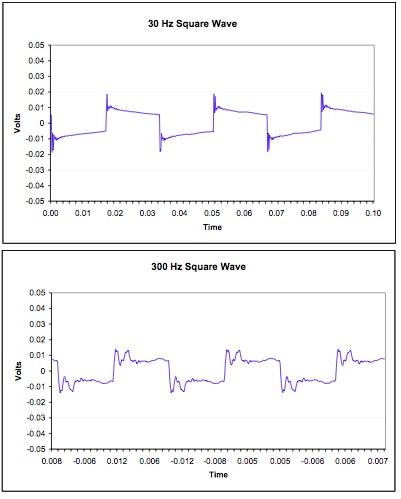- Joined
- Jun 22, 2001
- Posts
- 4,111
- Likes
- 1,339
Quote:
Just addressed that while you were posting, but it's worth repeating, because while I'll be able to get some decent measurements pretty quick, it'll take quite a while to learn how to massage the data so that it's meaningful to a fairly uneducated eye.
Quote:
Ooops! Forgot to address that. I absolutely will be measuring amps. There's a lot of stuff for me, myself, and I to do, so things will have to happen a bit sequentially, but I'm going there.
Actually, that brings up another point, I can acquire data all day long, but it's got to get displayed somehow. HeadRooms graph tool will continue to be a good resource, but it's likely to contain the data that HeadRoom needs for it's own purposes. So I've got to put up my own website and graphing tool.
I think it's important for me to focus on the content creation side and not spend weeks and months getting self educated on building dBase web widgets. I guess what I'm saying here is: If you want this data and lots of it with any type of speed, I'm going to need volunteer help, particularly on the web back end side. If you are adept at working with Drupal, PhP, MySQL, Apache, Linux, and the like, and would like to help, please PM me.
I also want to commit to you all that this venture is NOT for my benefit. I will be starting a non-profit 501(c)(3) company which will be dedicated to this effort. That company will belong to the hobby, not me, and it will be dedicated to providing great information and listening experiences for hobbyists. More to come on this in future as I'm just beginning to gather capable members for the Board of Directors and Advisory Board, but I wanted to let all of you know that your volunteer efforts will not be going to lining my pockets (though this does need to be a job for me, and the board will control that aspect). You're volunteer efforts will be going towards building a solid resource for yourselves as hobbyists, and for the general public as the distilled wisdom of the members here.
Argh, yabber, yabber, yabber, out for that walk.
| Originally Posted by jp11801 /img/forum/go_quote.gif Possibly more important than the raw data is the analysis of the data. Typically raw data is misinterpreted by under-informed but well meaning hobbyists. So just not measuring but providing insight to what the data could mean is where the value lies in my eyes. |
Just addressed that while you were posting, but it's worth repeating, because while I'll be able to get some decent measurements pretty quick, it'll take quite a while to learn how to massage the data so that it's meaningful to a fairly uneducated eye.
Quote:
| Originally Posted by JPnum-nums Amp measurements would be very cool as well. |
Ooops! Forgot to address that. I absolutely will be measuring amps. There's a lot of stuff for me, myself, and I to do, so things will have to happen a bit sequentially, but I'm going there.
Actually, that brings up another point, I can acquire data all day long, but it's got to get displayed somehow. HeadRooms graph tool will continue to be a good resource, but it's likely to contain the data that HeadRoom needs for it's own purposes. So I've got to put up my own website and graphing tool.
I think it's important for me to focus on the content creation side and not spend weeks and months getting self educated on building dBase web widgets. I guess what I'm saying here is: If you want this data and lots of it with any type of speed, I'm going to need volunteer help, particularly on the web back end side. If you are adept at working with Drupal, PhP, MySQL, Apache, Linux, and the like, and would like to help, please PM me.
I also want to commit to you all that this venture is NOT for my benefit. I will be starting a non-profit 501(c)(3) company which will be dedicated to this effort. That company will belong to the hobby, not me, and it will be dedicated to providing great information and listening experiences for hobbyists. More to come on this in future as I'm just beginning to gather capable members for the Board of Directors and Advisory Board, but I wanted to let all of you know that your volunteer efforts will not be going to lining my pockets (though this does need to be a job for me, and the board will control that aspect). You're volunteer efforts will be going towards building a solid resource for yourselves as hobbyists, and for the general public as the distilled wisdom of the members here.
Argh, yabber, yabber, yabber, out for that walk.























































